Wargaming with the US Naval Academy
By Mitch Reed
I once again accepted the invite from Sebastian Bae to playtest his wargaming student’s final projects at the US Naval Academy in Annapolis Maryland. As with my last time doing this I was very impressed with the games the students developed over the course of a semester and feel that some of the projects they had on display were good enough for the commercial market. For the last two years, the history department at USNA has sponsored a course in wargaming for the Midshipmen and while many may think it seems like a fun elective to take, the course does have some military application that the students will take with them and use as they embark on their careers as Navy and Marine Corps officers.
As we gathered in the USNA museum at Preble Hall, the force behind this initiative, Professor Claude Berube emphasized to the students that they need to take their knowledge of wargaming “to the fleet” where it can be used to analyze and solve the complex military problems they will face during their careers. By teaching students who will one day serve in the military, what USNA is doing is ensuring that defense wargaming has a cadre of leaders who understand the important role wargaming plays within the military.
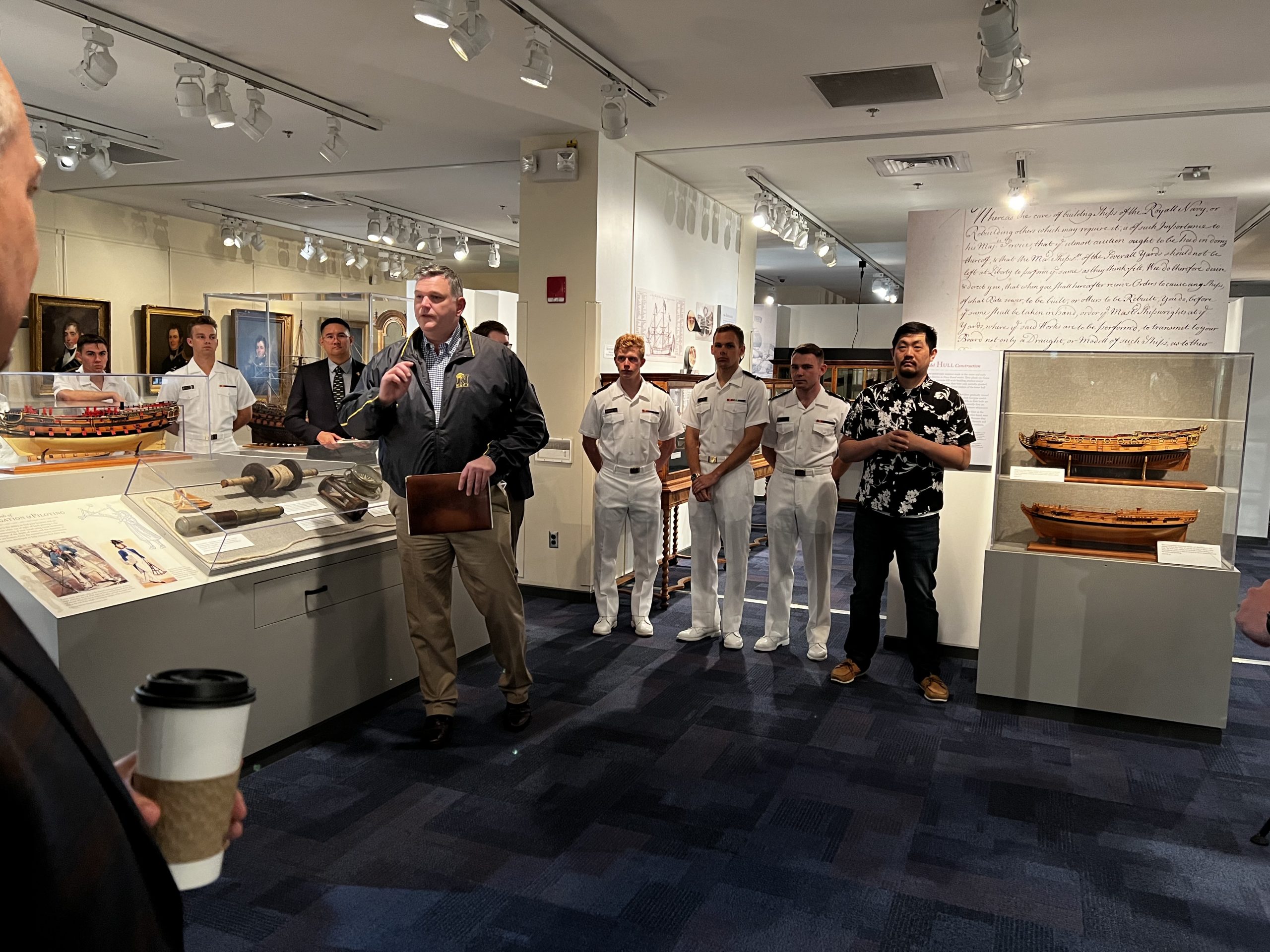
Much like the course, he teaches at Georgetown University, Sebastian takes his students through a challenging syllabus that requires that the students form groups and develop a wargame based on an actual military campaign. For part of their final exam, he invites defense and professional wargamers and military members to play the games and offers comments on the game they just played.
This event featured six games that varied in scope, scale, and time period and are as follows;
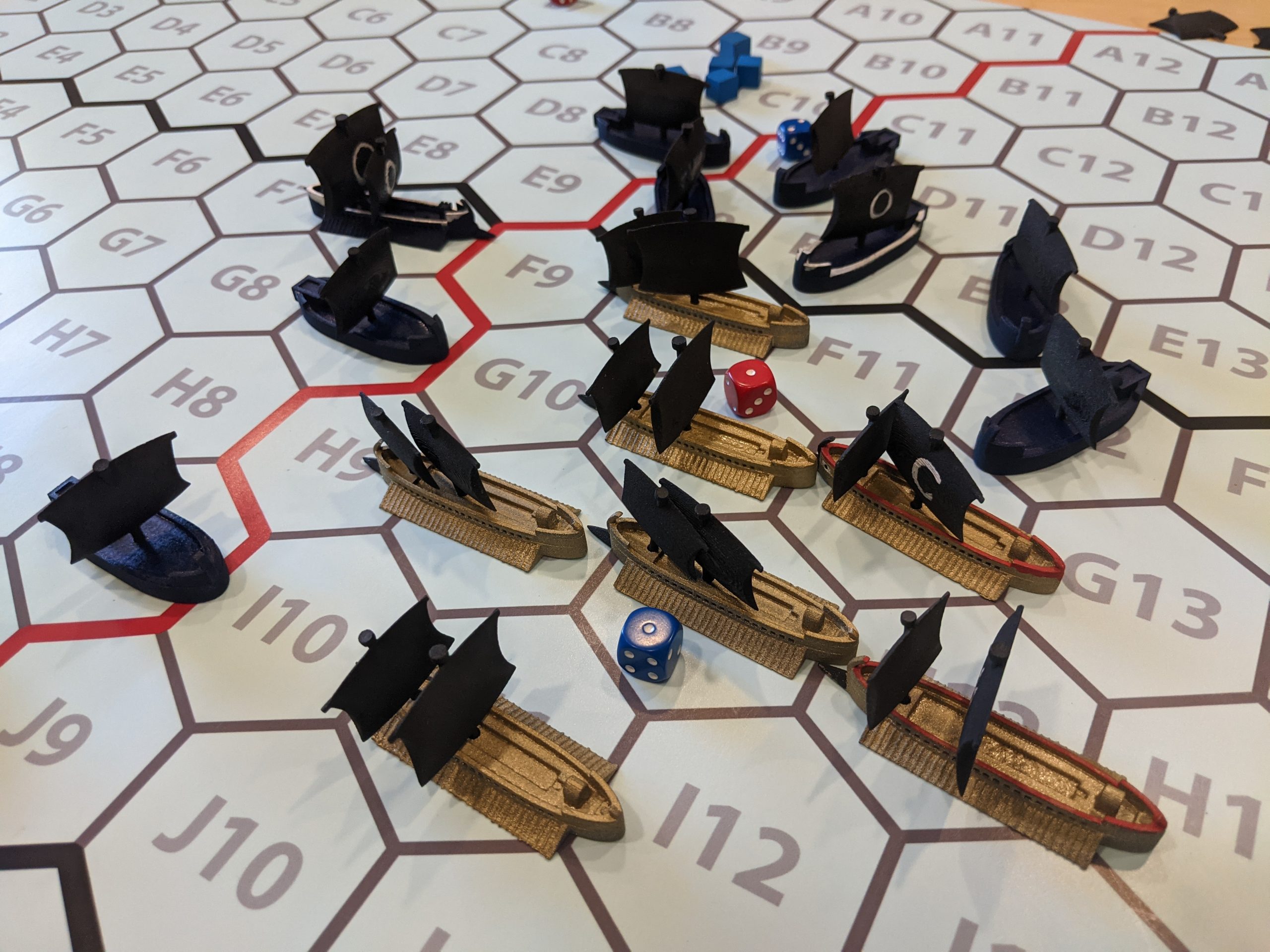
Battle of Actium 31 BC: Midshipmen Ragan Leslie, Corbin Devlny & Seth Benscoter
The Battle of Actium was a naval battle that took place in 31 B.C. off the western coast of Greece. The game portrays the relationships, decisions, and tactics of Octavian, Mark Antony, and Cleopatra. The game focused on the battle strategies and tactics of ancient era naval conflicts by replicating ship vs ship combat of the period.
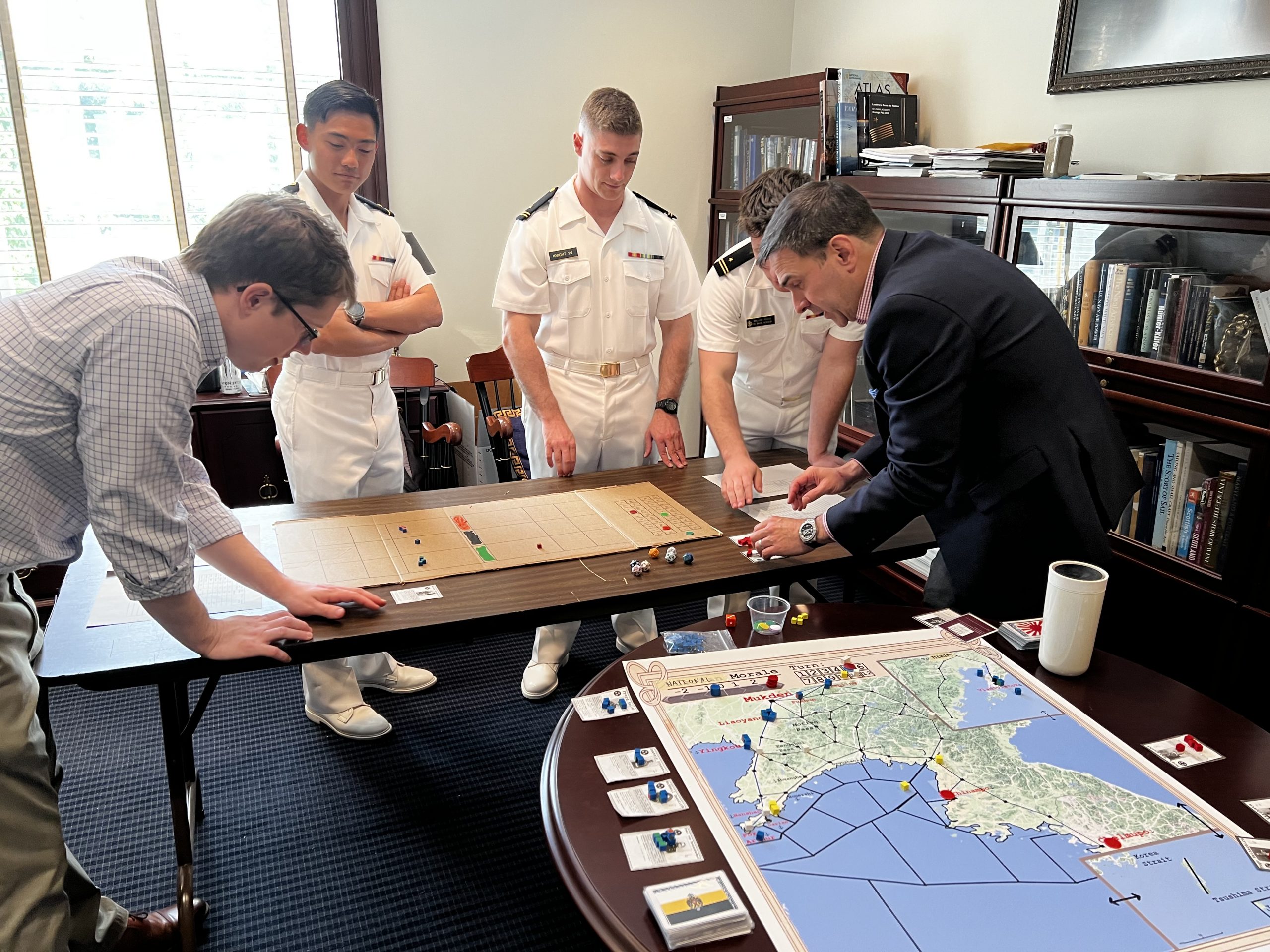
Korea 1592: War On the Peninsula: Midshipmen Kevin Burgess, Sean O’Dowd, and Eric Poe
This game focused on the initial Japanese invasion of Korea during the Imjin War which started in 1592. The game covers the sea and land fighting that took place on the Korean peninsula and details the role logistics and command control had on the campaign. This game also uses a huge map which I wish more games had.
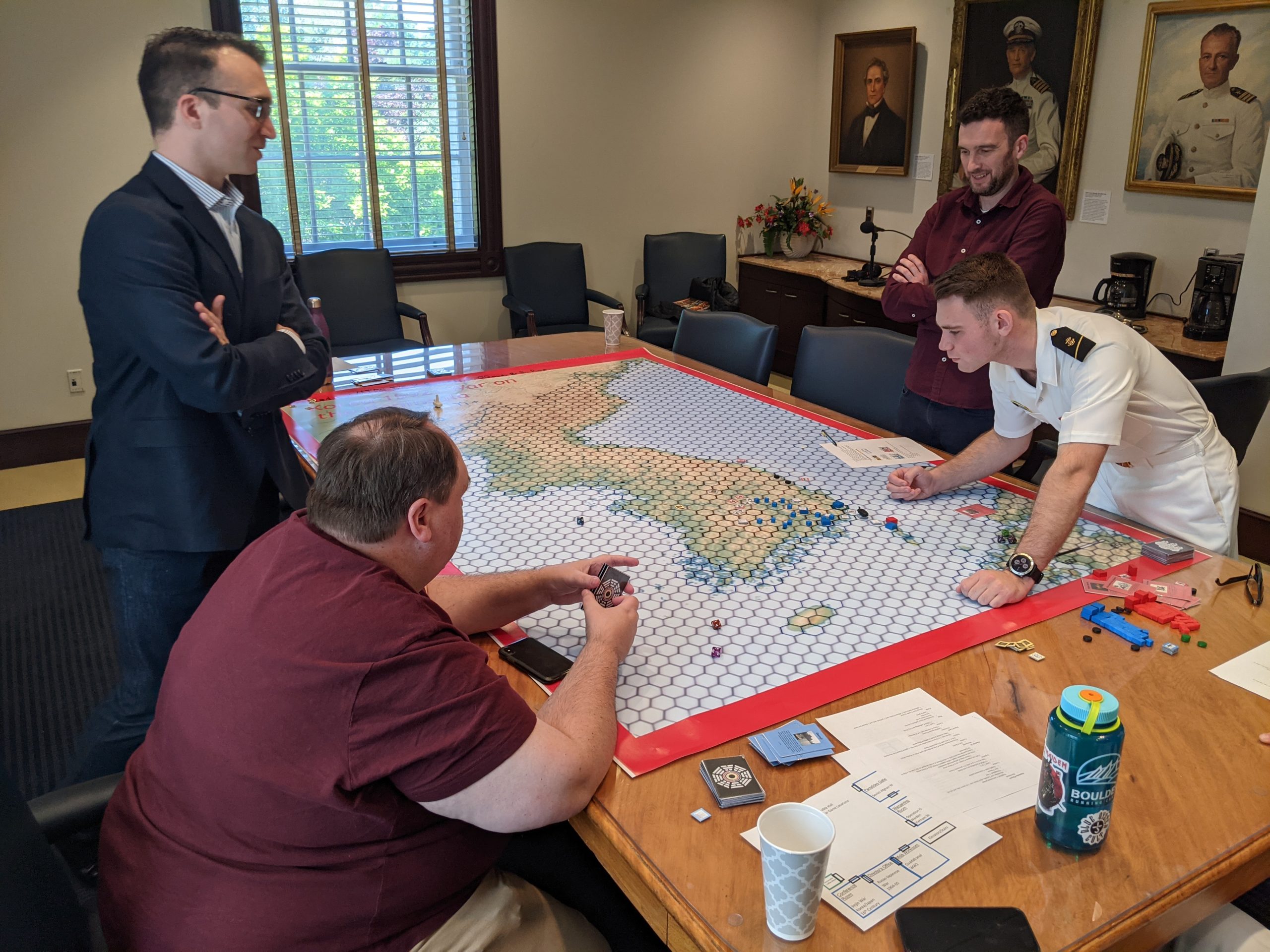
Russo-Japanese War: Midshipmen Isaac Cho, Ryker Knight & Austin Riggs
This game that features the land and naval fighting between Japan and Russia in 1904-1905. While designing this game the creators saw some asymmetries between the two sides in the areas of leadership, morale and intelligence collection and wove those capabilities into their game design.
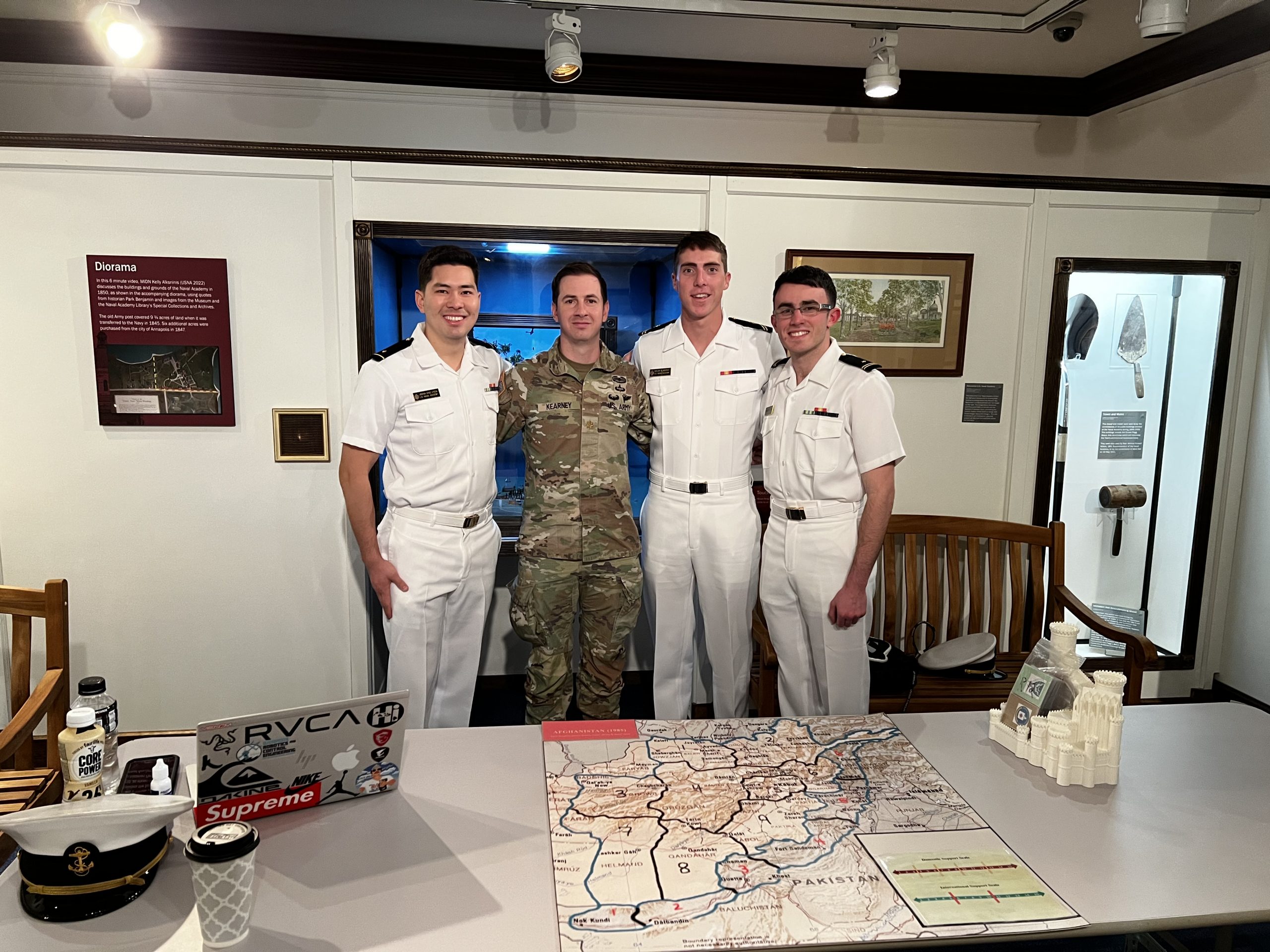
Afghanistan 1985: Midshipmen Spenser Ianniello, Declan Murphy, & Joshua Uyeda
This “semi-cooperative team-based hybrid” game looks at the counterinsurgency during the middle part of the Soviet-Afghan war. The game requires three players, two mujahedeen players who are in competition with one another and a Soviet player. According to my friend Paul who spent time in Afghanistan the game is solid and challenging and really portrays COIN operations in a teachable manner for gamers.
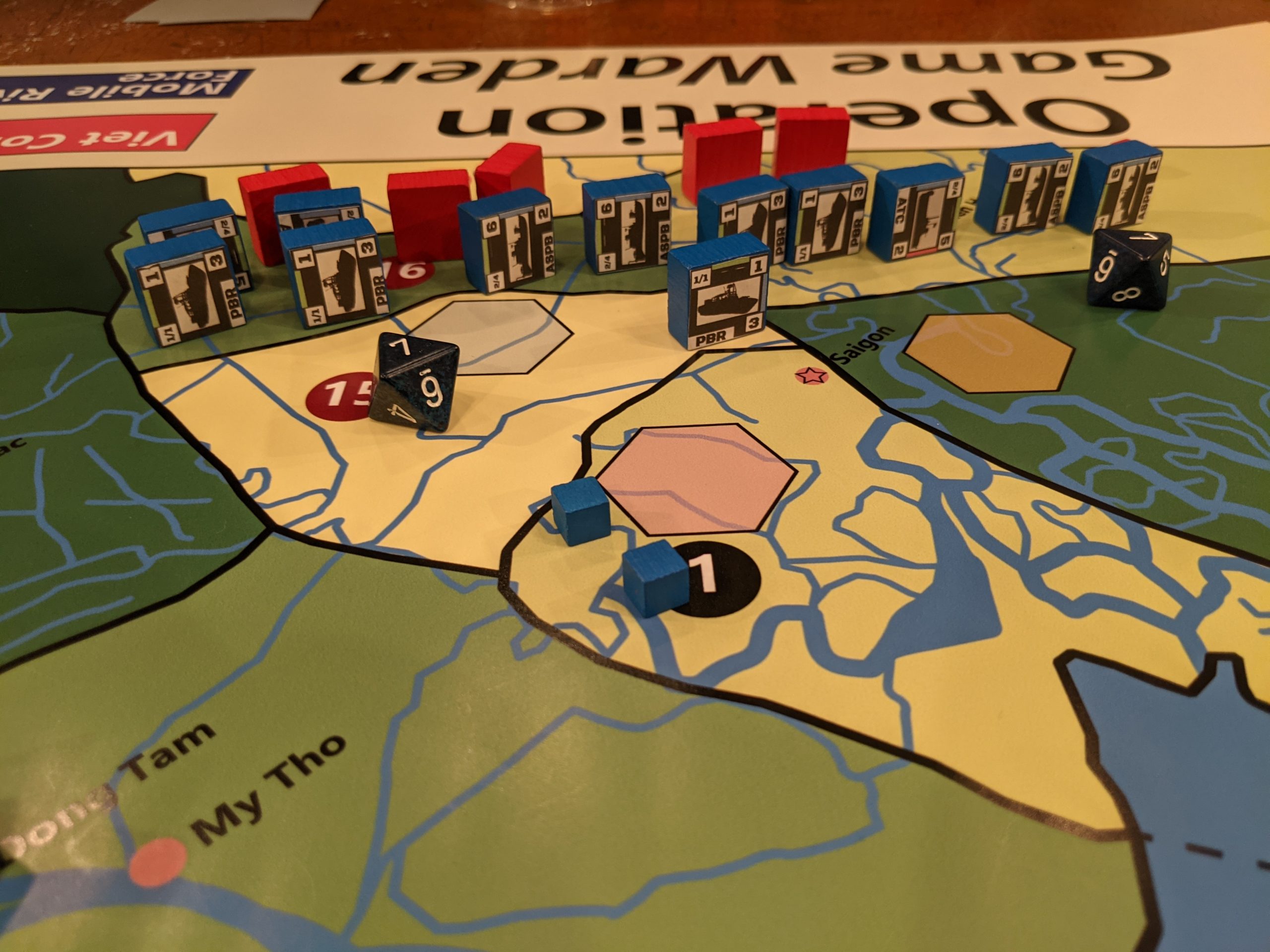
Operation Game Warden-Riverine and Insurgent Operations in the Vietnam War: Midshipmen Keoni Macayan, Marcus Wagner & Samuel Wolthoff
Taking place in South Vietnam’s Mekong Delta in 1967, this game challenges the US player to break the Viet-Cong control of the Delta by defeating its ground forces and destroying its base of supply. This game smartly blended in logistics, joint operations, and the use of intelligence in a tight game package.
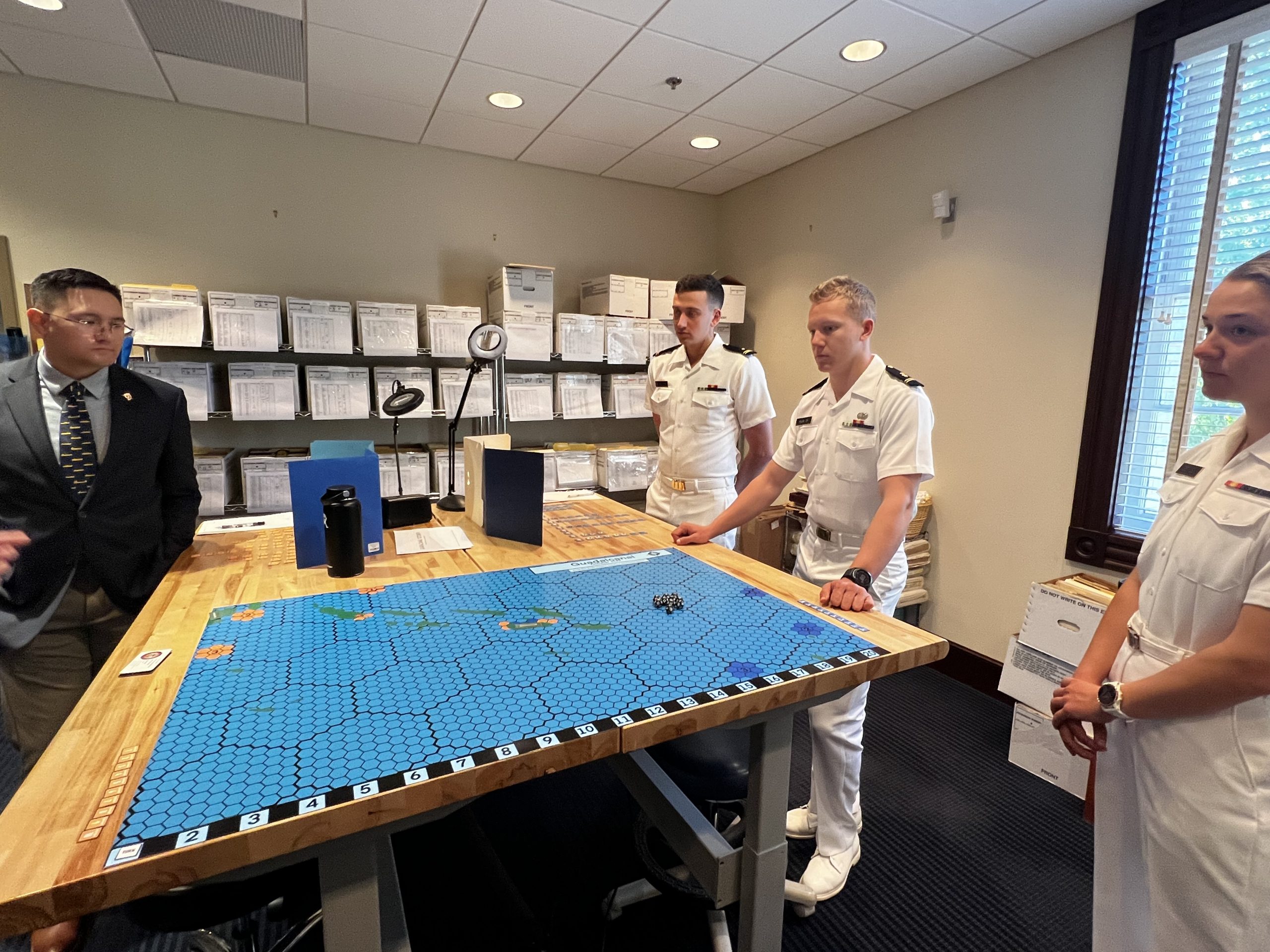
Guadalcanal- October: Midshipmen Gil Eby, Skyler Flietstra, Max Plum, & Charlie Stamm
This was the game I was fortunate to play and I cannot stop thinking about it. The game looks at the challenge of supplying Guadalcanal during October of 1942. The fact that it is a logistics game should not scare you off, supply to the island is the goal of the players, not how the game is played turn to turn.
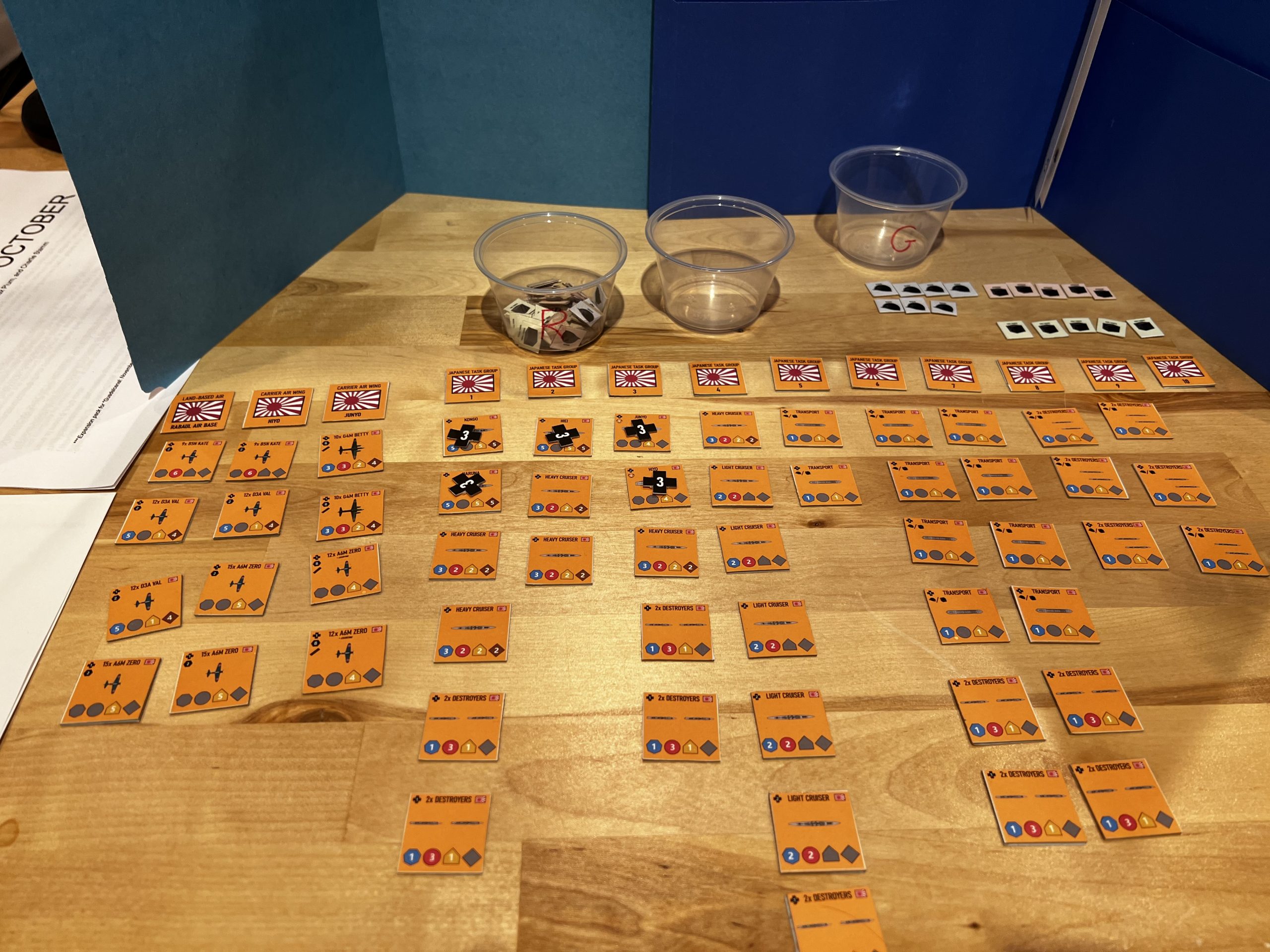
Each player has the fleets and air forces that were present during the battle and in the case of the fleets they form task forces with their ships and places them on the play table. This also includes decoy task forces and of course, all land-based air is at either Rabaul or on Guadalcanal. Each turn is 12 hours, alternating between day and night game turns. The goal of the game is to send troops, food, and ammo to the island during the game for a land battle that is played out on the last turn of the game. The more “stuff” and “people” you have on the island give you more dice and more chances to win the game.
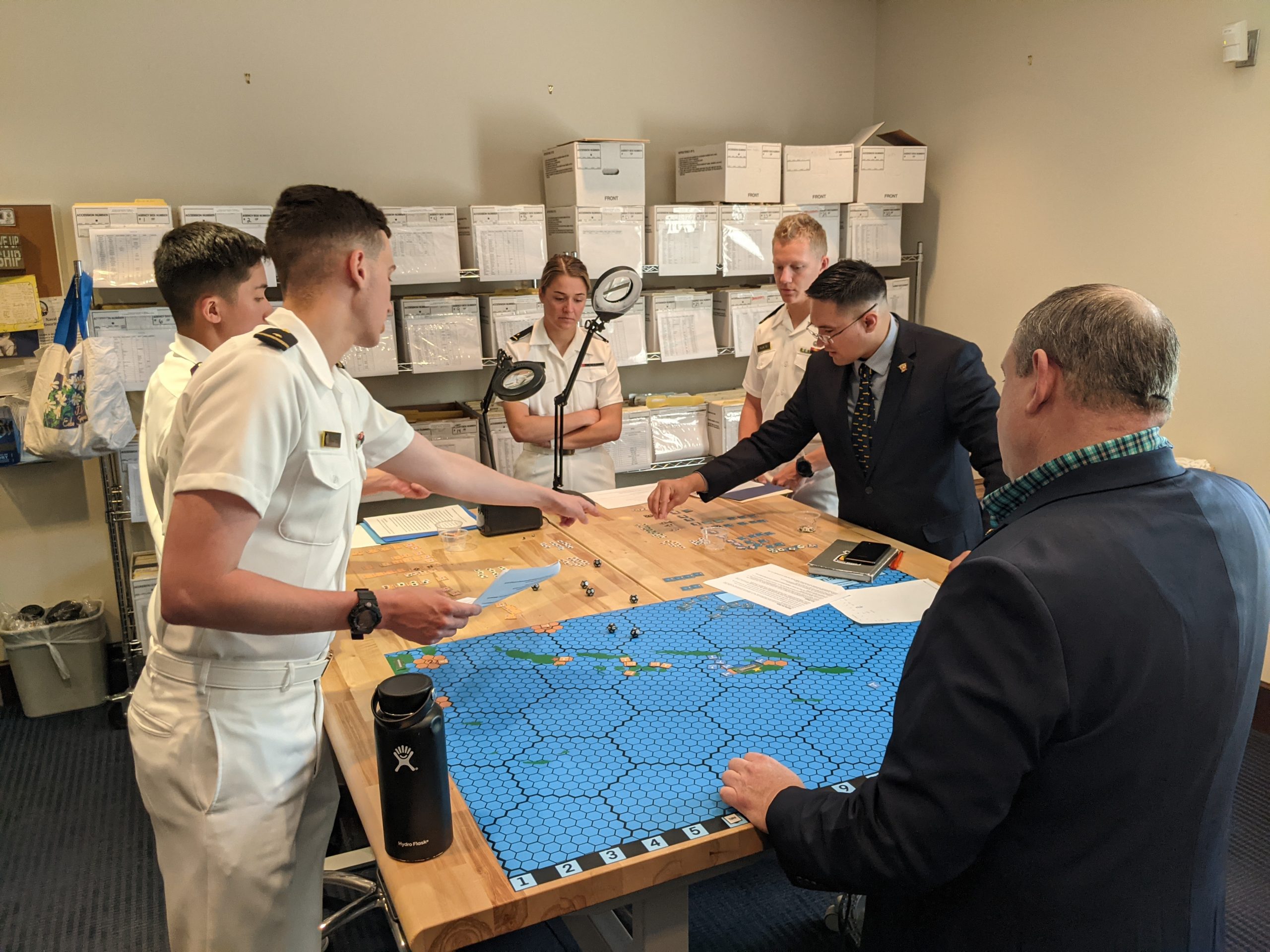
In order to keep the supplies flowing to island, your fleets and airpower have to control the seas and this is represented very well in the games mechanics. As the Japanese player, I was pitted against Captain Matt Evers, a Marine stationed at Quantico. I started the game by using my task forces with battleships and heavy cruisers to eliminate the US task group near the island. I was unable to scout the composition of the US group and just charged right in, to my surprise it had two US battleships.
I was lucky, I sank both but I took a beating in doing so, losing a battleship myself. I then attacked another task group, this one has two of his carriers and I was able to sink one and damage the other. I soon learned a lesson that every admiral learned in WWII, never be in range of land and carrier-based airpower in daylight. The constant air attacks put a hurt on my fleets and I had to withdraw my big ships out of range. For the next few turns, I concentrated on running my transports to the top of the “slot”, offloading, then using my fast transports to drop supplies on the island.
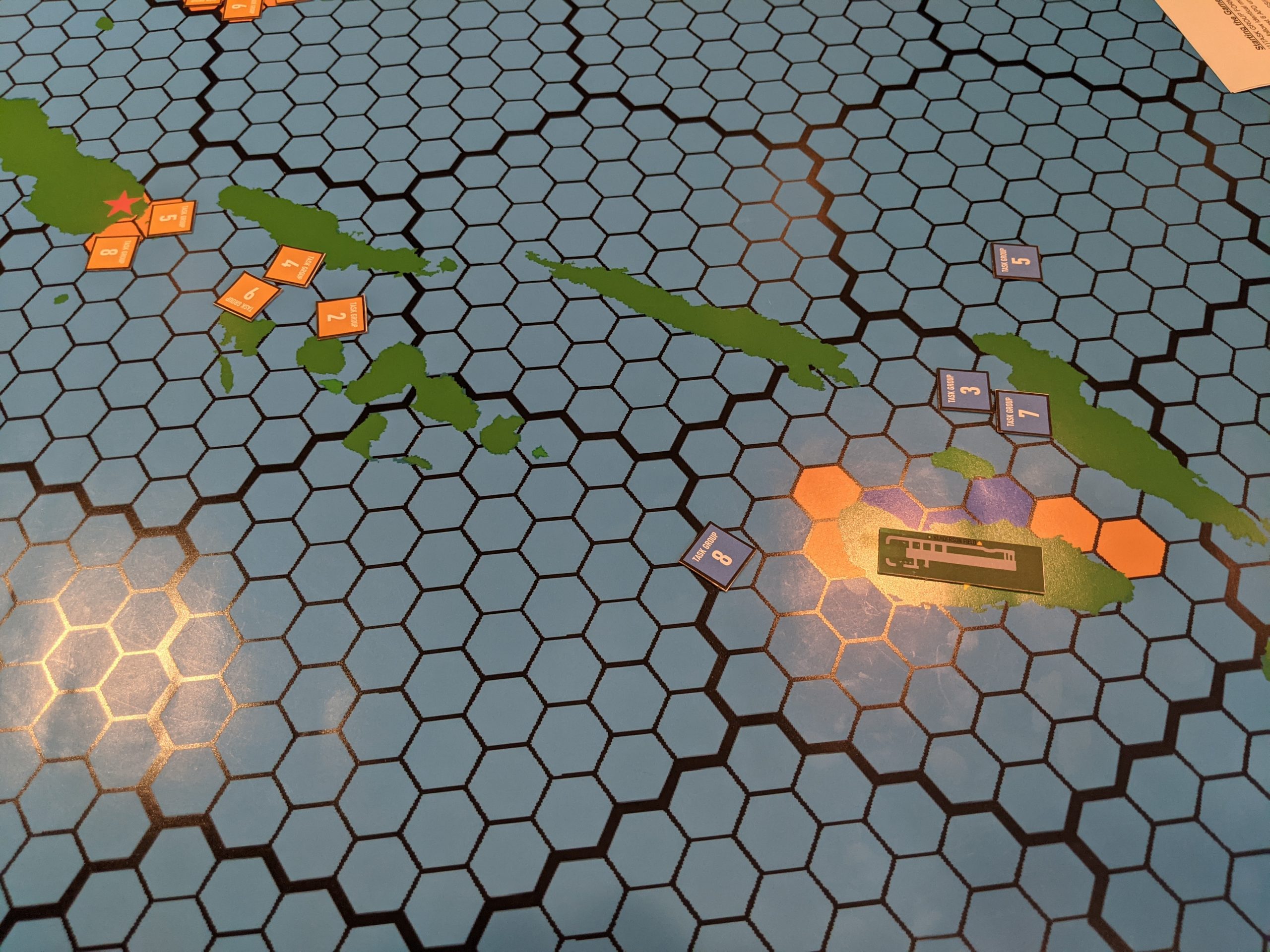
I was impressed with the game and I was shocked that they first started to work on it a few months prior to my playing it. While it could use some tweaks, which I mentioned to them, I feel with some work that this game would be a popular one in the hobby community.
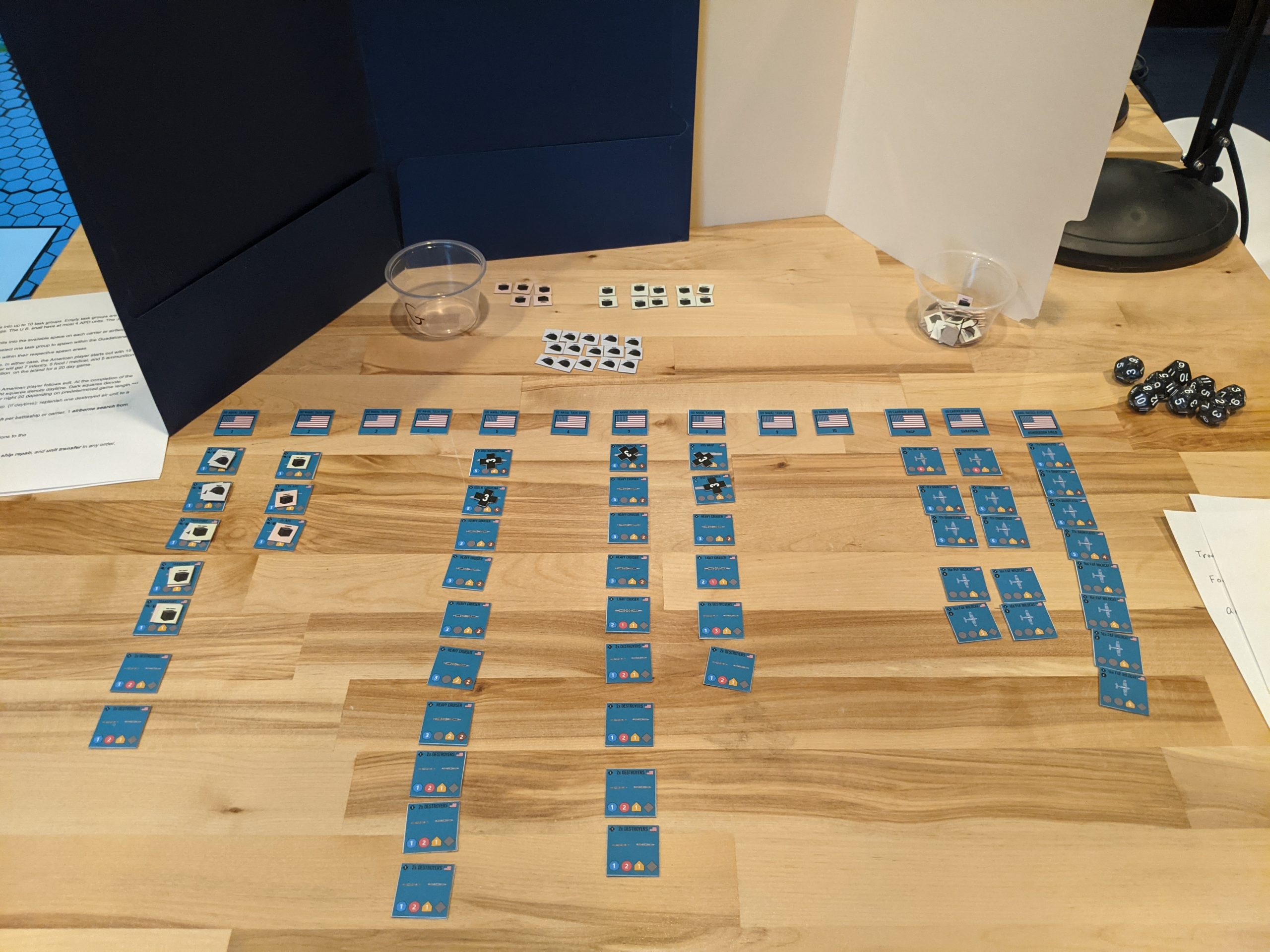
I wish I had more time to play some of the other games that were developed during the semester. I was able to read the rules and design notes of all the other games and some are very sound and use innovative mechanics in order to achieve their objectives. This dovetails in nicely with the long-overdue push to get different and younger voices into game design. I often state that guys like me are so indoctrinated in a particular way of thinking about wargaming that we lack the innovation to make better games which break the mold.
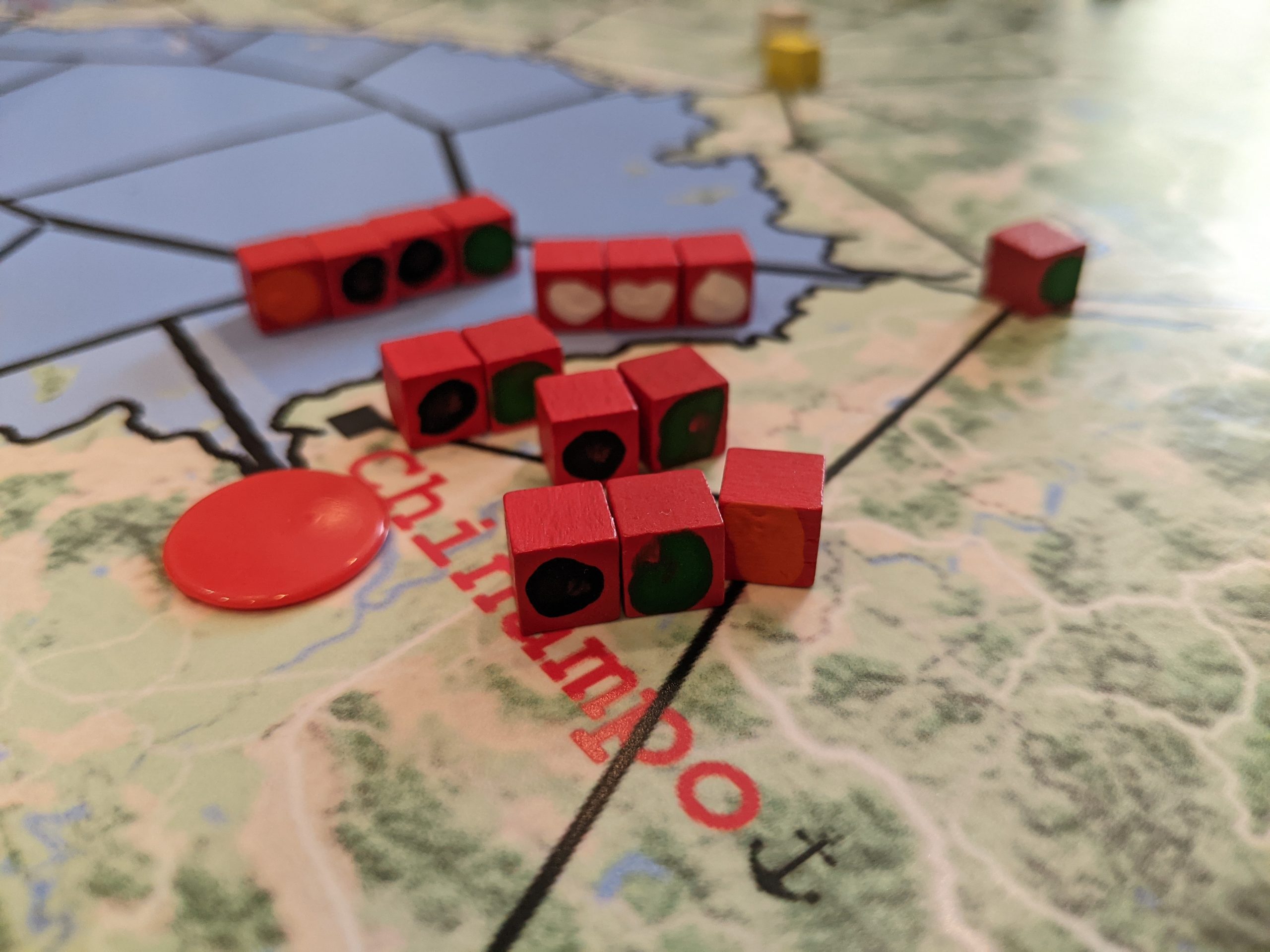
I also feel that what USNA and Georgetown are doing is crucial to the defense wargaming community. We need people who can look at new ways to design and use wargames to tackle our biggest problems. The hobby community will also benefit, these students will probably continue to play and hopefully design hobby games that many gamers will enjoy.
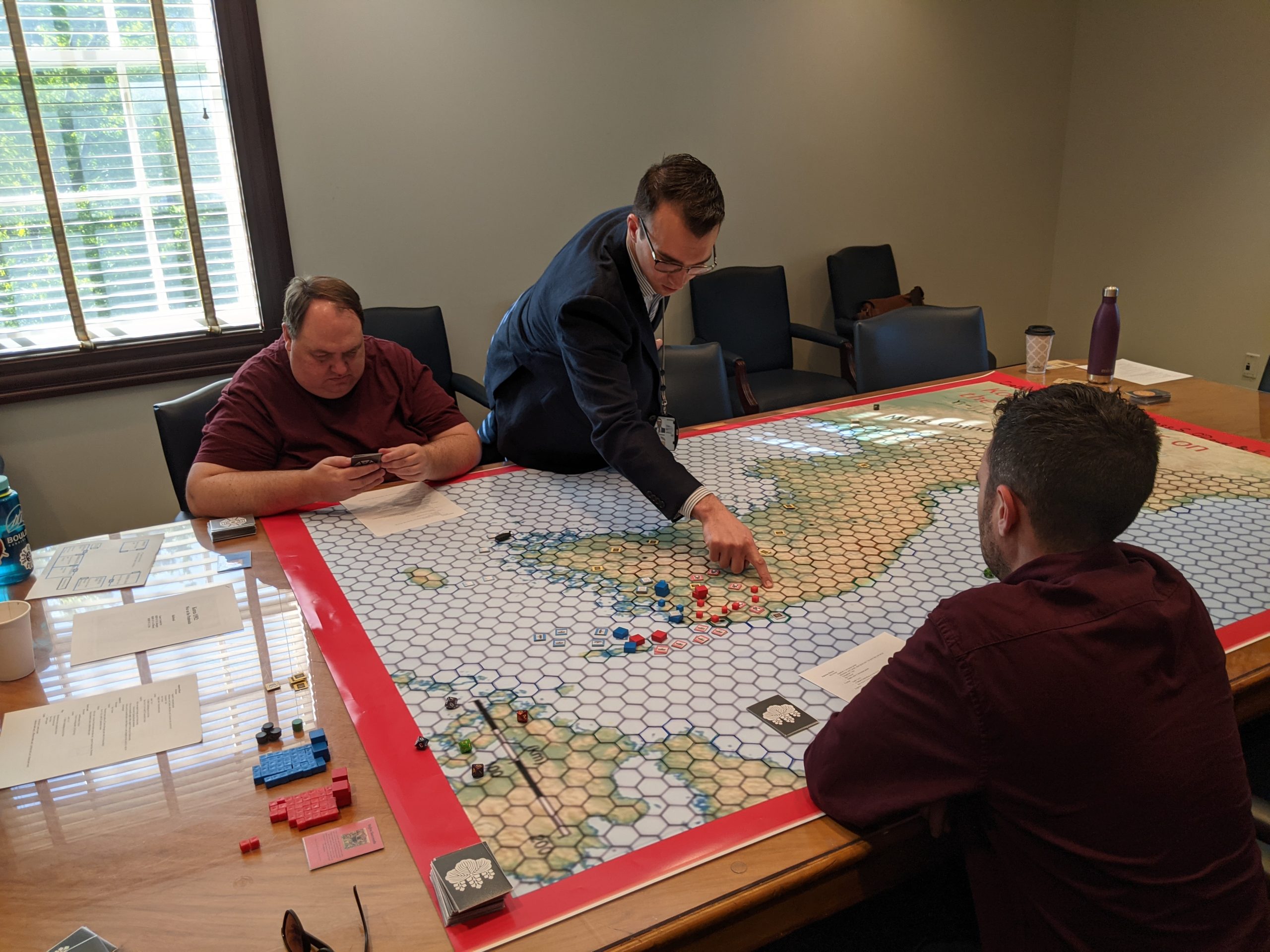 To the staff and midshipmen of the wargaming class, I wish to thank you for the invite, I plan to be back and to have fair winds and following seas in their futures.
To the staff and midshipmen of the wargaming class, I wish to thank you for the invite, I plan to be back and to have fair winds and following seas in their futures.
